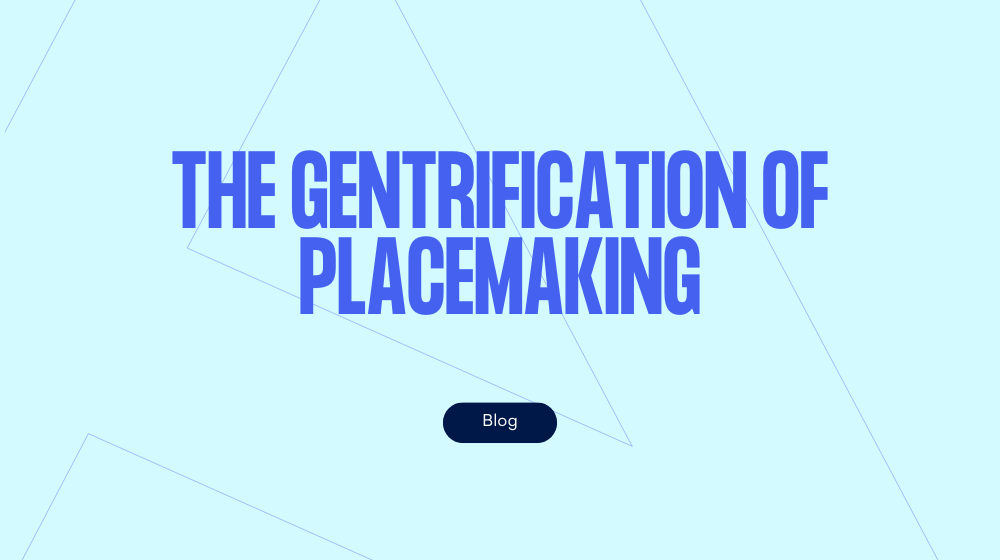It sounds pompous – and the smaller, cooler, emerging districts and venues, will say it will never happen to them – but gentrification comes to us all. Places never stand still. They are constantly evolving, changing and improving and there's nothing we can do to stop it.
Placemaking is the property buzzword for 2017. It's everywhere. Even at MIPIM back in March when businesses and organisations, and more planners, developers, councils and journalists than you can shake a stick at, explored the concept at length. One phrase from an event that I attended stuck in my mind though: 'Placemaking is about understanding a place's past, but bringing it forward with a new narrative for the future.'
Since MIPIM, I’ve continued to work on a number of commercial placemaking communications projects, some of which are in very early stages of development, and the more I consider how I'm going to set a strategy to market them, it always comes back to the fact that a place is an organic, living thing, with its own past. You can't force an opinion or a style on it and wrap it up in a perfect package with a brightly coloured bow. It will be what it wants to be, and we just need to tell its story in the most compelling way we can, to reach people who want to be a part of it at that particular point in time.
As projects and sites mature and become more mainstream, that natural order is for them to gradually become more gentrified. So, for example, a not so well-known scheme in a fairly run-down area of a city might begin to attract artists, start-ups and pop-ups looking to create a new community but with limited money to spend per sq ft. As the scheme develops it starts to become the next best place to be. In turn, rents begin to increase and businesses will grow up and stay put, or, in some cases, move on. Artists and mavericks are often superseded by more established architects and youthful tech / creative companies, who, in five years’ time, will probably move on themselves and be replaced by larger creative and digital companies, or even corporates.
Our challenge is to keep projects and places moving forward but at the same time, not lose the people that make it interesting. Through effective and compelling communications messages, we need to help them to remain part of the fabric of the scheme as it was their presence that helped make it popular in the first place.
The same goes for housing developments, which are often built on brownfield sites in the prophesied 'next new neighbourhood', perhaps close to an existing community so that it can benefit from existing amenities until it gets on its feet and develops its own. As the community grows, so too does the desire to live there. Next stop aspiration and gentrification.
Take El Born in Barcelona. It was an amazing, if a little rough around the edges, district when I first visited it in 2003. There were numerous pop-up shops and traders there, small independent bars, restaurants and some questionable-looking hotels.
I always say I wish I'd had £50,000 at the time to invest in property though, because, despite the fact that the real estate available at the time definitely needed more than a bit of TLC, what was worth £50,000 then would almost definitely be closer to the £350,000 mark now.
While El Born has still maintained its charm and its mix of cultural destinations, historic restaurants and bars that have stood the test of time over the last 15 years, it has definitely been through a process of gentrification. Firstly, with popular, independent boutiques making a name for themselves in the Gothic Quarter, before translating on to the European catwalks and moving on to more commercial districts in the city. Retail pop-ups quickly fitted out small retail units throughout the district before moving on in a matter of months. They were dutifully followed by more mainstream restaurants, tapas chains and retailers – and there's no doubt that these outlets will soon step aside to make way for the next wave of commerce.
But if you look around Barcelona you’ll find streets like Passeig de Gracia, which was probably once home to its own pop-ups and independents and is now one of the most expensive addresses in the city. It goes to show that, if you have a spare £350,000 to spend in El Born now, I’d say it's definitely worth a punt.
And so, it goes on...
This article gives a brief insight into planning and delivering placemaking communications. There's a lot more detail in our ebook Effective Placemaking Communications For Your Mixed-Use Development, Volume 2: Create, which you can download for free.




